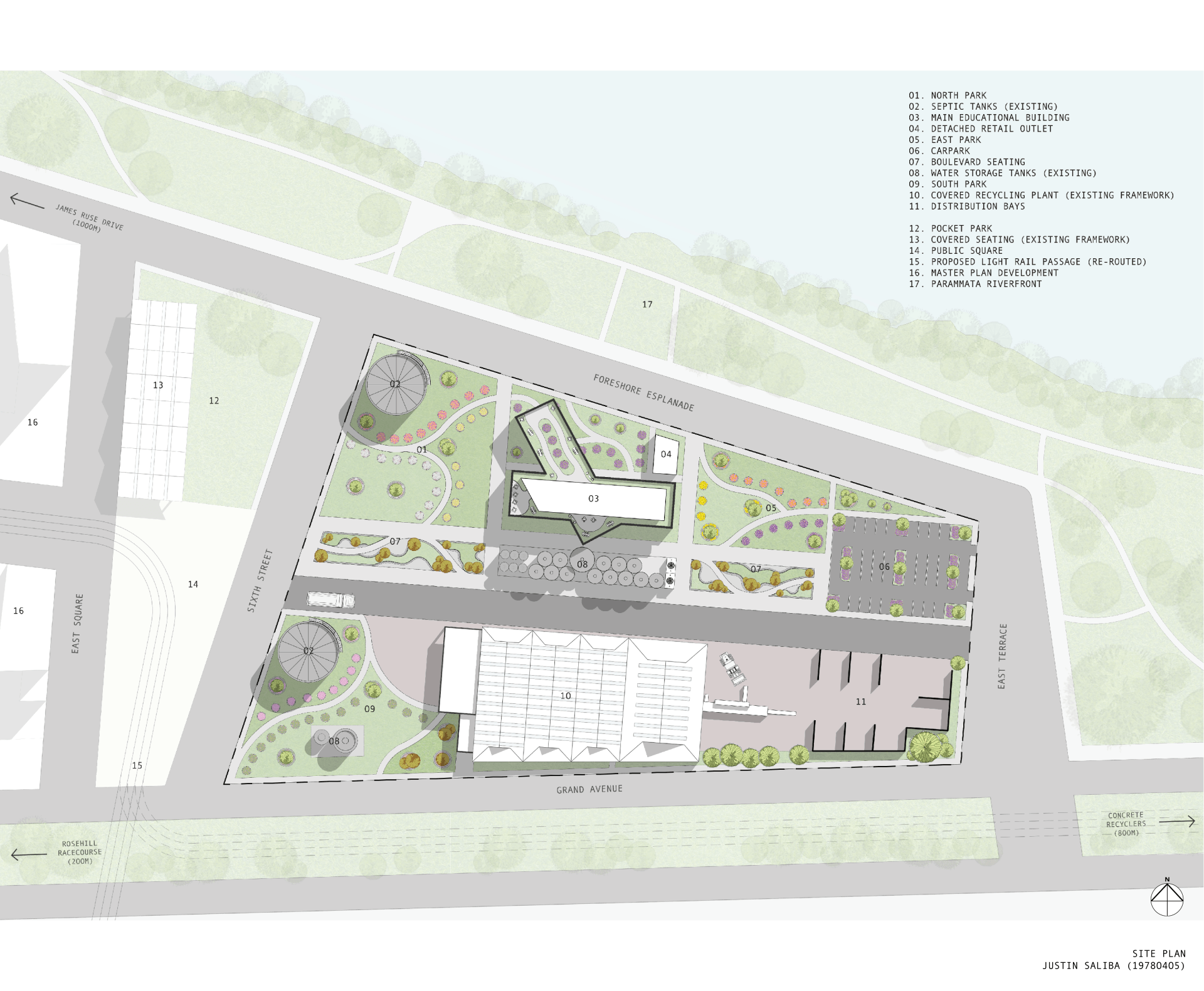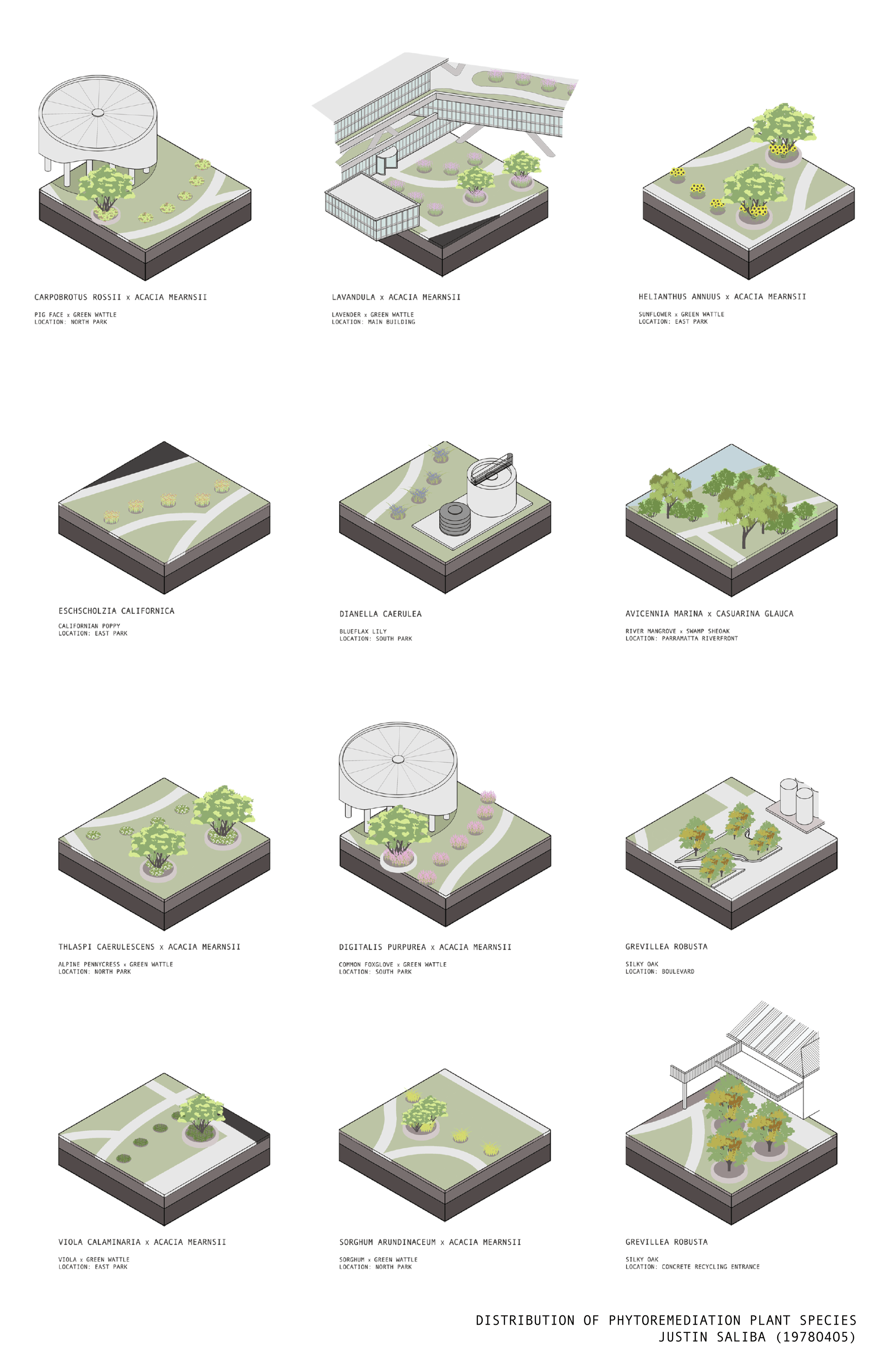Justin Saliba
Recently turning 21, I am motivated to become a licenced architect. Since the start of 2021, I began working at a local architectural firm that has significantly broadened my industry knowledge and skills, further igniting my desire to become a recognised asset within the built environment.
The semester began with an introduction to the Western Sydney suburb of Camellia. With a long history of industrial development dating back to the 1880’s, the highly contaminated site has been identified as a key area to support the growth of the ‘Central River City’ of Parramatta CBD. The current master plan for the Camellia Town Centre precinct, emphasises the pressure of population growth, climate change and socioeconomic transformations, on planning, and how this creates a divide between architecture, infrastructure and urban design. This studio project, however, was an attempt to merge these pressures.
Concrete recycling within a suburban landscape.
My strategy to resolve such divisions stemmed from the process of phytoremediation. This involves the use of living plants as decontaminates for soils that have experienced severe industrial treatment, and have the ability to absorb these toxins without affecting the harvested quality. Research along the Parramatta Riverfront revealed the presence of asbestos and other disturbances within the ground plane, which over time, has the potential to disrupt the growth of the native mangrove vegetation and beyond.
I selected a series of plant species to include within my design. Each reflecting characteristics of phytoremediation and durability in growing in a variety of contaminated conditions, some of which are native plants to Australia.
Aiding my motive of phytoremediation, I analysed the existing infrastructure present on the allocated site, with the ambition to recontextualise and adaptively reuse these past structures. Existing storage and water tanks became landmark elements throughout the site, as well as the use of the structural framework and roof form of an existing logistical company for the concrete recycling process.
Overall, my design is an attempt to merge the often fragmented and overlooked combination of infrastructure and urban design with architecture, into one successful form.
Architecture as a collective.




